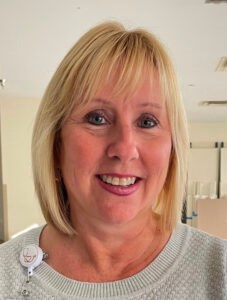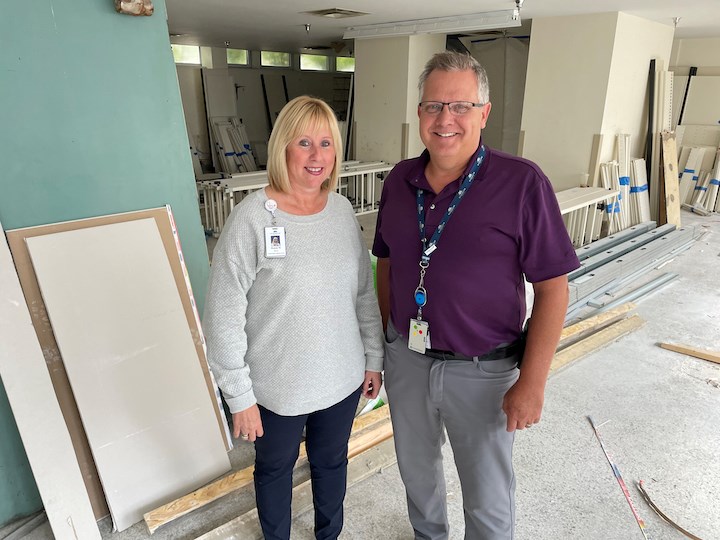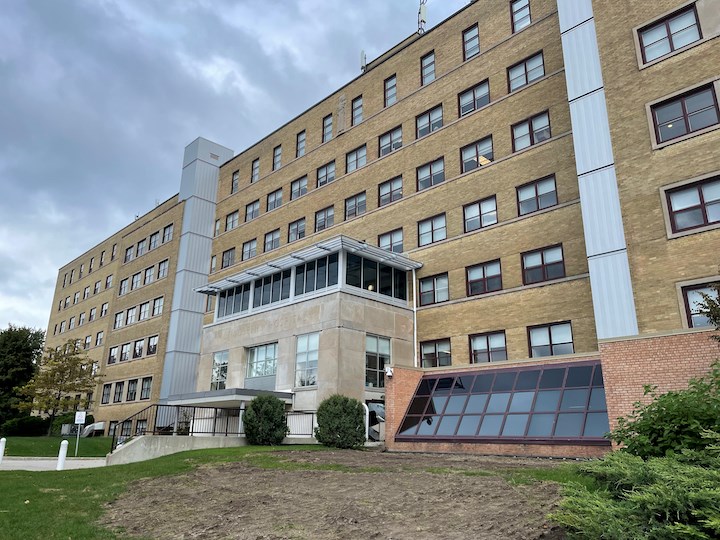$12.5 million announced in 2022 for withdrawal management facility
Cathy Dobson
It will be at least 2025 before Sarnia-Lambton’s new 24-bed withdrawal management facility opens at Bluewater Health.
That’s despite a provincial announcement in 2022 that promised $12.5 million for additional early-stage recovery beds. Back then, the hope was that a new facility or “addictions hub” would open in 2024 to ease the community’s dire situation. But the process is moving quite a bit more slowly, says Jack Vanderveen, director of facility and support services at Bluewater Health.

“I hope the community understands we’re excited and anxious to open as well,” he said. But the architectural plans won’t be ready for at least a few more weeks and then they’ll need approval from the Ministry of Health.
The ministry is likely to take several months to review the plans and, if approved, the project will then be tendered. When construction finally begins, it’s expected to last 12 – 18 months.
Asked when the community can anticipate the opening, Vanderveen said he didn’t want to estimate. “I don’t want to put a deadline on it,” he said. “We’ve got an unknown variable when it gets to the ministry.”
It’s possible the addictions hub will open in 2025 but it could easily be later, said Vanderveen.
But that doesn’t mean progress isn’t being made on the building, he stressed.
Workers have been replacing infrastructure for the past nine months in the first three floors of the hospital’s vacated west wing where the withdrawal management hub will be located.
Bluewater Health is spending $1.5 million on infrastructure renewal to outfit the building – which was constructed in 1959 – with new electrical, water lines and upgraded elevators. That’s money being spent on top of the $12.5 million for the new facility.
In a few weeks, the hospital will tender demolition work Vanderveen anticipates will begin in January.
Demolition crews will strip the interior right down to the studs, he said. “Then we can custom build the three floors with exactly what’s needed.”

A wish list of what the community wants for the new facility has been assembled over the past year, said Donna Morreau, integrated director for mental health and addiction services at Bluewater Health and the Canadian Mental Health Association.
Twelve interviews with people from various walks of life, including indigenous, those living with addictions, those in early recovery, and the homeless were conducted over the past year to determine what they’d prefer at the addiction hub.
Their ideas are being incorporated by the architect including a kitchen where they can make their own meals, a healing circle, “flex” beds that can be used for either acute detox or stabilization, and features that make it seem more of a home than a hospital facility.
The architectural plans have been revised seven times, adding to the length of the process, said Morreau.
Addiction workers, hospital managers and local politicians have been calling for a residential rehab centre in Sarnia-Lambton for nearly 30 years.
The new addiction hub will not be a longer term residential facility like Westover Treatment Centre in Thamesville or Brentwood Recovery Home in Windsor.

Instead, the new hub will bring together the seven existing detox beds at Bluewater Health that allow for weeklong stays, and the 12 beds at Ryan’s House on Exmouth Street where people recovering from addiction can live up to 30 days, then add five more.
Existing beds will close when the hub opens, Morreau said, meaning that the community will have a total of five new beds to offer people who want to kick their drug habit.
“This is not a residential rehab,” Morreau stressed. “We’ll be expanding from 19 to 24 beds, all at Bluewater Health. The key will be that we can flex with the beds.”
If longterm residential rehab is requested, clients will have to wait to go to out-of-town facilities just as they do now. Gaps in service will continue to exist, Morreau conceded.
However, those experiencing addiction will receive additional support from a new medical bus that is supposed to hit the road in October, she said.
The long-awaited mobile care bus will provide “real time” access to services, especially in rural Lambton County, Morreau said. A nurse practitioner, a mental health worker and a substance abuse “navigator” will man the bus three days a week.
